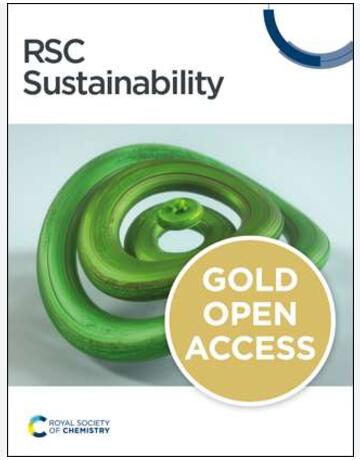Influence of Forest Management on the Sustainability of Community Areas in Northern Inland Portugal: A Simulated Case Study Assessment
IF 3.3
3区 环境科学与生态学
Q2 ENVIRONMENTAL SCIENCES
引用次数: 0
Abstract
The northern inland region of Portugal has experienced significant population decline due to the exodus of younger generations and an aging population. This has led to the abandonment of traditional activities in these territories, contributing to territorial abandonment, degradation of local economic conditions, increased social vulnerability, and a heightened risk of rural fires. The presence of communal lands, known as “baldios”, is an important facilitator for implementing actions that revitalize local villages, making them more attractive to the community. Forests, which are abundant in the baldios of northern inland Portugal, have the potential to generate environmental, social, and economic value through carbon sequestration, job creation, population stabilization, and wealth generation in the villages. However, the viability of this asset as a driver for sustainable development depends on the forest management model implemented. This case study aims to demonstrate that different forest management models have varied impacts on sustainability indicators, particularly economic and environmental sustainability. Based on naturally regenerated forests in the Carvalhelhos baldio in the Tâmega Valley region, data were collected to simulate in software four management scenarios, varying the number (0 to 4) and age of thinnings until the final cut. The simulation allowed for the calculation of the following economic indicators: Internal Rate of Return (IRR), Net Present Value (NPV), and Net Profitability Index (NPI), as well as environmental indicators related to carbon capture and accumulation, such as Gross Carbon Accumulation, Net Carbon Accumulation, Carbon accumulated in dead and suppressed trees, and carbon balance per management model. The simulations indicate that, for the studied area, Scenario 2, which involves only one thinning, yielded the highest total wood volume (cubic meters per hectare) over the cycle, making it the most suitable for biomass production. Meanwhile, Scenario 4, with three thinnings, showed the best results for individual volume (cubic meters per tree), making it more suitable for producing higher-value logs. Scenario 5 presented the best economic results and carbon capture. In all simulations, Scenario 1 showed the worst performance in the analyzed indicators. It was found that the indicators varied among the studied crop plans, highlighting that the adoption of a silvicultural regime depends on the forest characteristics, objectives, exploitation conditions, and local population sensitivity to regional priorities.森林管理对葡萄牙北部内陆社区可持续性的影响:模拟案例研究评估
由于年轻一代外流和人口老龄化,葡萄牙北部内陆地区人口大幅减少。这导致这些地区的传统活动被遗弃,造成土地荒芜、当地经济条件恶化、社会脆弱性增加以及农村火灾风险上升。被称为 "baldios "的公有土地的存在是实施振兴当地村庄行动的重要促进因素,使其对社区更具吸引力。在葡萄牙北部内陆的 "baldios "地区,森林资源丰富,通过碳固存、创造就业机会、稳定人口和为村庄创造财富,有可能产生环境、社会和经济价值。然而,这一资产作为可持续发展驱动力的可行性取决于所实施的森林管理模式。本案例研究旨在证明,不同的森林管理模式对可持续发展指标,尤其是经济和环境的可持续发展具有不同的影响。基于塔梅加山谷地区 Carvalhelhos baldio 的自然再生林,我们收集了相关数据,并通过软件模拟了四种管理方案,即改变疏伐次数(0 至 4 次)和疏伐年龄,直至最后一次疏伐。通过模拟,可以计算出以下经济指标:内部收益率 (IRR)、净现值 (NPV) 和净利润率指数 (NPI),以及与碳捕获和积累相关的环境指标,如总碳积累、净碳积累、枯死和被抑制树木的碳积累,以及每个管理模式的碳平衡。模拟结果表明,在研究区域内,方案 2 只涉及一次疏伐,在整个周期内产生的木材总量(每公顷立方米)最高,因此最适合生产生物质。同时,方案 4(三次间伐)的单株产量(每棵树立方米)最好,因此更适合生产价值更高的原木。方案 5 的经济效益和碳捕获效果最好。在所有模拟中,方案 1 的分析指标表现最差。研究发现,所研究的作物计划的各项指标各不相同,这突出表明,采用哪种造林制度取决于森林特点、目标、开发条件以及当地居民对地区优先事项的敏感性。
本文章由计算机程序翻译,如有差异,请以英文原文为准。
求助全文
约1分钟内获得全文
求助全文
来源期刊

Sustainability
ENVIRONMENTAL SCIENCES-ENVIRONMENTAL SCIENCES
CiteScore
6.80
自引率
20.50%
发文量
14120
审稿时长
17.72 days
期刊介绍:
Sustainability (ISSN 2071-1050) is an international and cross-disciplinary scholarly, open access journal of environmental, cultural, economic and social sustainability of human beings, which provides an advanced forum for studies related to sustainability and sustainable development. It publishes reviews, regular research papers, communications and short notes, and there is no restriction on the length of the papers. Our aim is to encourage scientists to publish their experimental and theoretical research relating to natural sciences, social sciences and humanities in as much detail as possible in order to promote scientific predictions and impact assessments of global change and development. Full experimental and methodical details must be provided so that the results can be reproduced.
 求助内容:
求助内容: 应助结果提醒方式:
应助结果提醒方式:


